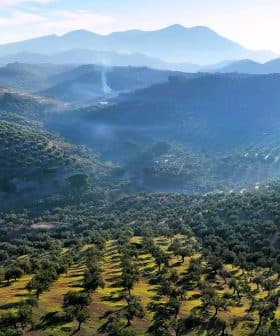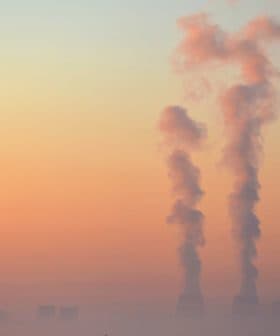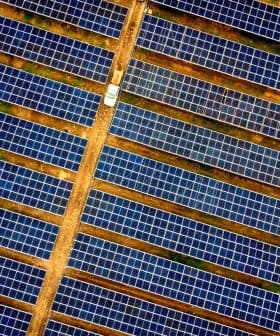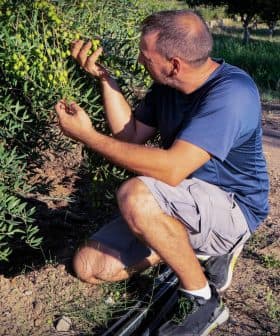Spain Launches a New Strategy Against Desertification
Desertification in the world’s top olive oil-producing country is being fueled by the ongoing drought and poor land management practices.
 Marismas del Odiel National Park in Andalusia, Spain
Marismas del Odiel National Park in Andalusia, Spain  16.0K reads
16.0K readsThe Spanish government has introduced a new multi-year action plan to combat desertification, aiming to increase biodiversity and ecological resilience in the country’s driest areas. The strategy seeks to prevent and mitigate desertification, restore degraded soil, and establish a network of experimental areas for land restoration and conservation efforts. Experts warn that climate change, intensive agriculture, and overexploitation of water resources are exacerbating the issue of desertification in Spain.
The Spanish government has announced a new comprehensive multi-year action plan to combat desertification, a phenomenon that is affecting two-thirds of the country.
Desertification is considered an ever-increasing threat to soil fertility and biodiversity in many regions, including some of Spain’s most relevant olive-growing areas.
Desertified land is the simplified remains of an original landscape… A desertified area would take a very long time to restore its reference ecological functionality.
Until 2030, national and local authorities, researchers, non-government organizations, farmers and other stakeholders will participate in the national strategy for the battle against desertification (ENLD).
It aims to increase biodiversity and ecological resilience in the country’s driest areas while promoting actions to restore degraded soil.
See Also:Study Reveals Impacts of Climate Change on Spanish Olive Sector“The larger goal is to contribute to the preservation and recovery of the natural capital related to the dry, semi-arid and dry sub-humid areas of Spain,” the ENLD announced in a press release. “And to progress towards neutrality in land degradation by preventing and mitigating desertification and restoring degraded areas.”
Andalusia, the largest olive oil-producing region in the world and home to many of the world’s super-high-density olive groves, is one of the most at-risk territories.
Among the drivers of desertification, the ENLD cites intensive agriculture, livestock grazing, and over-exploitation of water resources.
It also lists depopulation of rural areas, abandonment of forest land, climate change and wildfires as concurrent causes of the worsening situation.
The national strategy will establish a network of experimental areas for land restoration and promote water resource conservation, soil conservation, land management and forestry best practices.
The strategy also calls for creating a national atlas of desertification, a public informational platform and a national council overseeing efforts to reverse desertification.
While restoring and recovering affected areas is among the new strategy’s main goals, not all the damage can be undone.
“A desertified area would take a very long time to restore its reference ecological functionality,” Gabriel del Barrio, a landscape ecologist and desertification expert at the Arid Zones Experimental Station (CSIC), told Olive Oil Times.
“Land degradation means utter ecological simplification and resource depletion,” he added. “Therefore, the concerned ecosystem has a weak basis to progress. For example, where topsoil has been eroded, it is very difficult to start a proper ecological secondary succession. Of course, it can and will be done, but it will take decades or centuries in drylands.”
According to Del Barrio, early warning and prevention are better alternatives, as a restoration will be successful almost exclusively on land that has only mildly degraded.
“The best approach is to avoid reaching extreme levels of land degradation,” he said. “For land in use, therefore under moderate desertification, we have found that maximizing the land management options is a plausible approach that is still compatible with making a profit.”
“By maximizing management options, I mean managing any practical land use in such a way that it has the potential to be changed to other land uses,” Del Barrio added. “The more land uses become possible, the better.”
“In ecological terms, this involves reducing vegetation turnover, increasing the biomass and letting soil organic carbon accumulate in the topsoil,” he continued. “In land use terms, this is easily converted into management criteria that increase the land value and the farmer’s resilience in the long term.”
While deserts are ecosystems that have adapted over time, desertification leads to a completely different environment.
“Desertified land is the simplified remains of an original landscape,” Del Varrio said, “Overexploitation, soil exhaustion and other drivers caused a selective pressure towards opportunistic species,” which reduced biodiversity.
Experts believe that climate change is not the sole cause of desertification but can worsen the impact of human-driven overexploitation.
“The current prospect of a relatively quickly warming climate may have a large impact on desertification,” Del Barrio said. “First, it will act like human-driven exploitation to deplete water, net primary productivity and other slow-renovating natural resources. Second, the speed of change may prevent adaptation in natural ecosystems.”
Del Barrio added that while Earth’s climate has constantly changed, the rate of this change was much slower, allowing ecosystems to adapt. However, he worries that these changes are happening too quickly for those systems to adapt.
See Also:WMO Says Next Five Years Will Be Hotter than The Last FiveThe issues caused by the rapidly changing climate have also coincided with a tendency toward intensive agricultural practices, which compounds these problems.
“In recent times, land uses became increasingly intensive,” Del Barrio said. “Particularly irrigated land. It has increased enormously in Spain, with a 14-percent increase between 2010 and 2019. Irrigated land occupies approximately 40,000 square kilometres and it is responsible for 80 percent of the total water consumption in the country.”
“Assuming that reservoir capacity remains constant, and aquifers are depleting gradually, it follows that the safety margin against droughts, heatwaves and other adverse weather events becomes dangerously reduced,” he added.
In June, Spain was hit by one of the worst heatwaves in recent years. Paired with seasonal forecasts, the heatwave prompted the National Meteorological Agency to warn citizens and farmers of a hot summer ahead for most of the country.
“The heat wave that has been recorded in Western Europe… has been described by the World Meteorological Organization as unusually early and intense,” José Ángel Núñez Mora, head of Climatology at the Meteorological Centre in Valencia, told Olive Oil Times.
“The warm air mass spread from North Africa to Europe at an early date, before the summer solstice, bringing more typical temperatures for July or August,” he added.
In the case of Spain, this anomaly lasted for more than a week, with average temperatures reaching 10 ºC above the typical mid-June values.
“Several observatories exceeded 40 °C. Some of them exceeded their historical record of maximum temperature in the month of June,” Núñez Mora said.
He added that some parts of the country recorded record-high temperatures last month, including San Sebastian in the Basque Country.
Record temperatures have also become more common, the meteorologist warned, with historic heatwaves in 2017 and 2019.
“The International Panel on Climate Change (IPCC) has been warning for two decades now, that a linear increase in average temperature would lead to an exponential increase in very hot days and the frequency of heat wave days,” he said. “On the other hand, there would be a decrease in the cold and very cold days, and the cold waves will be rarer.”
Núñez Mora said climate data collected over the last few years demonstrates that the IPCC’s warnings are coming to fruition.
What he describes as a “not-too-pessimistic scenario” shows warm temperature anomalies rising from 5 percent of days in the last 25 years of the 20th century to 50 percent of days in the last 30 years of the current century.
“Although the components of the Earth system are very different in composition, physical and chemical properties, structure and behavior, all of them are bound by flows of mass, heat and amount of motion, which implies that they are not closed systems, but all subsystems are open and interrelated,” Núñez Mora said.
“So, a change in one component, in this case, the atmospheric one, necessarily has an impact on others, particularly biodiversity and fragile ecosystems in our Mediterranean environment,” he concluded.
- Spanish Ministry for the Ecological Transition and the Demographic Challenge
- Spanish National Meteorological Agency
Share this article









